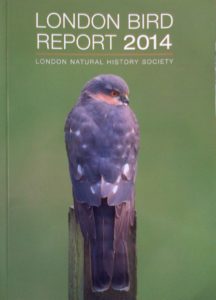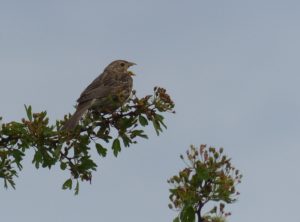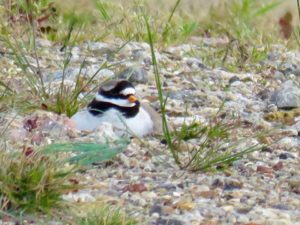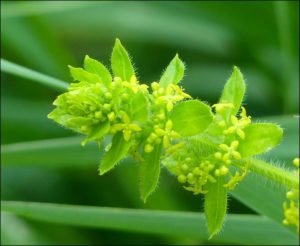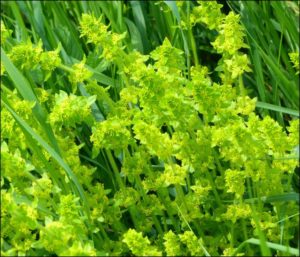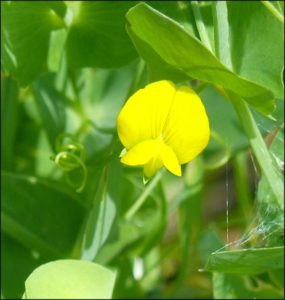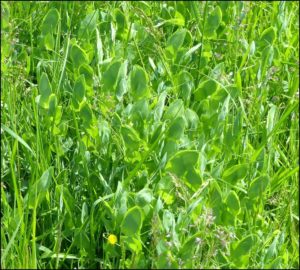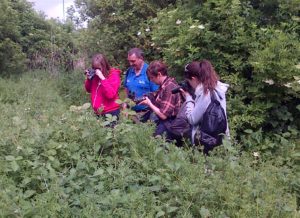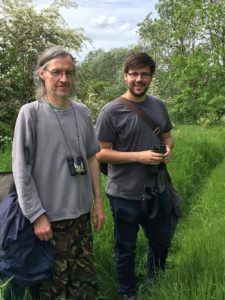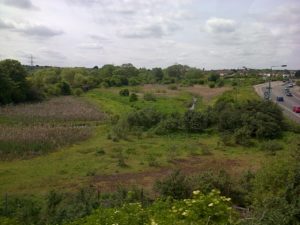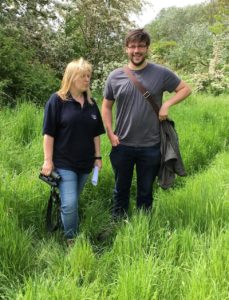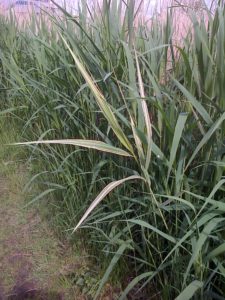Following a second, but still grossly inadequate ‘ecology report’ from Cory ‘Environmental’s Riverside Resource Recovery arm – that once again misses out red-listed breeding birds, and offers no credible onsite ‘mitigation’ or creation of off-site ‘compensatory’ habitat for the losses that would arise from the construction of two four-storey data centres on fields right next to Crossness Nature Reserve – ‘Save our Skylarks’ campaigners have launched an online petition to enable more people to object to the scheme, including those who come from far and wide to visit what is one of London’s best wildlife and birdwatching sites.
The petition, which has already been signed by 607 people, is here:
https://www.change.org/p/london-borough-of-bexley-save-our-skylarks-do-not-build-on-breeding-habitat-adjacent-crossness-nature-reserve?recruiter=32895925&utm_source=petitions_show_components_action_panel_wrapper&utm_medium=copylink
Personal submissions will still carry more weight, so if you can spare a few minutes, some points you might like to make in the wake of the second, flawed report, are given below. 208 pre-printed letters of objection to this ‘development’, many with personal comments added, have already been gathered and the more of these there are the better. A date for the matter to go to Bexley Council’s planning committee for decision has still not been set, so there is still time to make fresh or additional views know.
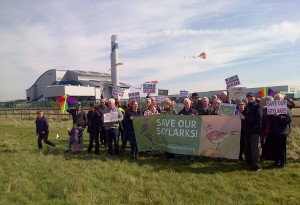
Objectors have slammed Cory’s second attempt at an ecology survey, and its claim that the red-listed Skylarks and Ringed Plovers at Erith Marshes are ‘insignificant’.
Breeding bird survey done at the wrong time – again!
Ralph Todd, writing to the Council’s Head of Planning on behalf of the 300-strong Friends group said ‘Once again, the ecologists have failed to carry out breeding bird surveys at the correct time. This time their visits took place in March and April, with the last visit being on 18th April: before the breeding season was fully underway. As a result of this, they failed to confirm ACTUAL breeding bird activity and were only able to provide details of PROBABLE breeding, thereby completely missing the breeding Ringed Plover that was nesting on the north Borax Field from at least 24th April and never actually witnessing the Skylark and other species that have bred there. It all seems a little convenient.’
All habitat is not the same ….
He went on to point out that ‘The report states that other suitable foraging habitat exists nearby, as though this makes loss on the Borax fields acceptable, but the point is this is not foraging habitat, but breeding habitat. There is NOT suitable breeding habitat for certain species nearby. The only other suitable breeding habitat was the location of the old electric substation on Norman Road, and Bexley Council have deemed it acceptable to build all over that too.’
If it’s rare in Bexley, it’s insignificant and not worth conserving here, says Cory ‘Environmental’s’ ecology report!
The nub of the report is ‘4.33 In conclusion, the Site lies outside areas of nature conservation designation. The Proposed Development will result in the loss of Open Mosaic habitat which currently supports only a small population of breeding birds of a very limited range of species and is of local interest for invertebrates. Such loss is not considered to have a significant impact on the population or conservation status of protected or priority species.’
The main concern that the Friends group has, said Ralph, ‘is the implication that because only a small number of breeding birds are supported by the Borax Fields, that the impacts are not significant, and are therefore prime for building on. We, however, would argue the opposite: Skylark breed on only 3 sites within the London Borough of Bexley, one of which is Crossness (on the Borax Fields only) and another is Crayford Marsh, where this is a larger population, but this too is under threat from a separate planning application. So while the population may be small at Crossness, the borough wide impact is enormous. By allowing this development to go ahead, you are in effect leading to the extinction of Skylark and Ringed Plover as breeding species within Bexley. Surely this goes against the Council’s own biodiversity policy and biodiversity action plan?’
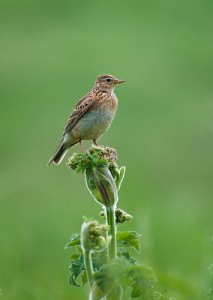
The future of the Skylark in Bexley is threatened by proposed ‘developments’ at both Erith Marshes next to Crossness Nature Reserve and at Crayford Marshes. (Photo: Dave Pressland, with permission)
Chris Rose, for Bexley Natural Environment Forum, wrote ‘In other words [they’re saying] the rarer something is in the Borough the less important it is to conserve it here. In fact it’s not worth bothering to try. This is wrong-headed idiocy. The whole purpose of having conservation targets and biodiversity action plans up and down the country is precisely so that everyone doesn’t destroy their own small part and leave us with severely diminished populations in a few ‘core’ places, or none at all. Since Bexley Council states in Core strategy CS18 that it intends to ‘protect and enhance’ biodiversity in the Borough and avoid significant impacts we say this must be measured and put in the context of the London regional and Bexley Borough level picture, not just national. The logical consequence of doing otherwise is that Bexley Council only protects a species heading for extinction in the UK, the entire population of which is so small that the majority of it is to be found within the Bexley boundary. This would be absurd and fly in the face of everything conservation policy is trying to achieve. There are though to be perhaps 200 Skylark breeding territories in the whole of London (LNHS data for 2014) and only 13 across 5 sites in south-east London/Kent out to 20 miles from St Paul’s cathedral, most of which fall outside the London administrative boundary. ‘
He also pointed out that ‘Skylark [is a] a UK BAP species upon which public money is being spent elsewhere in the country to try and recover numbers’ and that ‘Skylark is included in the UK Government’s wildlife indicator of sustainability. In this context it should be noted that Bexley Council’s own Core Strategy purports to be all about delivering sustainability.’
Additional concerns
Both groups raised concerns about freshwater run-off into ditches identified by the ecology report as containing notable invertebrates that require brackish conditions, and the wholly inappropriate height of the buildings for this location. The invertebrate survey also failed to adhere to the recommended guidelines for open mosaic habitat. BNEF described the applicant’s claim that their proposed four-storey constructions, which will be the tallest buildings after the Belvedere incinerator facility, ‘…will offer relief from the more uniform height of the warehouse and industrial buildings to the east.’ as ‘absurd spin’.
Demand for ‘compensatory habitat’ creation
In the absence of any promise of ‘mitigation’ through sufficient green and brown roofing to provide some prospect of the red-listed birds being able to carry on breeding here, both FoCNR and BNEF have called for ‘compensatory’ habitat ‘to be created by the restoration of an equivalent area of former industrial land elsewhere in the Borough that is largely hard surfacing, to a wildlife-rich state’, should the application be approved. They have further stated that ‘This should be as close as possible to Erith Marshes, and ideally be suitable for (re-) creation of grazing marsh or mosaic habitat. [So as to] halt the net loss of high quality wildlife habitat in the Borough, support the Council’s BAP in relation to grazing marsh and other key biodiversity objectives and to satisfy the NPPF requirement of attempting to avoid biodiversity loss and deliver net biodiversity benefit from ‘development’.’
To make your first, or further personal comments on this application, please send an e-mail using the subject line ‘Planning application 15/02926/OUTM’ to the Council at:
developmentcontrol@bexley.gov.uk
using some of the following points …… If you have made a written submission already, point out that you are now responding again in the light of the second (revised) ecology report. Any comments will be accepted up to the date of the planning committee meeting, which still hasn’t been set.
1) The excessive visual intrusion of 4 storey buildings into what should be an open, ‘big skies’ area.
2) The continuing inadequacy of the ‘ecology survey’ which is still missing solid information on species that are a material consideration in planning, and has not followed recommended practice in either the survey of breeding birds or of invertebrates.
3) The significant loss of and impact on biodiversity, including the probable extinction as breeding species in the Borough of red-listed Skylark and Ringed Plover and Schedule 1 of the Wildlife and Countryside Act 1981-listed Little Ringed Plover, for the latter two of which the fields are the only breeding site in Bexley. Skylark is also under threat of a significant reduction in numbers at its only other secure breeding site in the Borough at Crayford Marshes. Important feeding habitat for other declining bird species would also be lost.
4) A significant knock-on impact on the adjoining Site of Metropolitan Importance for Nature Conservation and Local Nature Reserve, since these species do not recognise the fenceline between the two, and transit between the two areas.
5) The total loss of flower-rich open mosaic habitat, which is a Biodiversity Action Plan habitat. There is an open mosaic habitat target for the capital in the London Plan, to which Bexley is presently making zero contribution.
6) The complete lack of commitment to anything vaguely approaching adequate onsite mitigation for these losses or a promise of creating compensatory habitat elsewhere. It should be noted that the red-listed species require this type of habitat for nesting, which is not found elsewhere on Erith Marshes and is in short supply in Bexley. They can’t just go somewhere else.
In the light of this, the provision of ‘compensatory’ habitat, to be created by the restoration of an equivalent area of former industrial land elsewhere in the Borough – that is largely hard surfacing and wildlife poor – to a wildlife-rich open mosaic state, must be imposed as a condition, should the application be approved.
7) Approval of the application as it stands would be contrary to the National Planning Policy Framework, London Plan and Bexley Core strategy policies regarding biodiversity. The fact that Bexley (woefully) decided to zone the fields for industrial use does NOT exempt the proposed ‘development’ from being tested against these policies.
8) The loss of important open space, visual and wildlife amenity to current and future users of the surrounding area at a time when these things are increasingly being shown to be important for mental health.
9) The terrible example approval would set to the many schoolchildren for whom educational events at the Nature Reserve provide a gateway to an understanding of the importance of wild places, wildlife and their conservation.
(Chris Rose)



